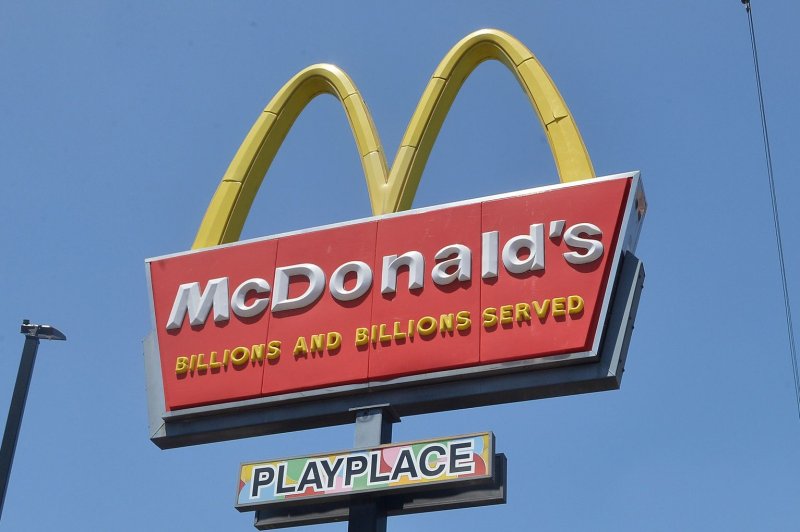McDonald's is targeting youth with social media marketing posts in some countries globally, according to a new study. File photo by Jim Ruymen/UPI |
License Photo
Dec. 21 (UPI) -- Fast-food chain McDonald's may be targeting children in lower middle-income countries globally with marketing messages, potentially worsening diet problems in some of the world's most vulnerable populations, an analysis published Tuesday by the journal BMJ Nutrition Prevention and Health found.
The analysis of the chain's social media posts, advertising and promotional campaigns reveals that more Instagram posts, price promotions and child-friendly marketing targets younger consumers in these countries than those in wealthier nations, the researchers said.
McDonald's created 154% more marketing posts in lower middle-income countries than in higher-income countries, the data showed.
In addition, while about one in five company social media posts in lower-middle income countries was child-friendly, compared to about one in eight in high-income countries, according to the researchers.
With access to healthy, nutritious food options already a challenge in many of these countries, the youth-focused marketing tactics may worsen existing public health problems there, they said.
"This is an important and timely analysis, because we are beginning to gain insights into 'whole systems' determinants of food choices, which include food production, food supply and the food environment," nutrition advocate Sumantra Ray said in a press release.
"This study offers early, but crucial, insights into the impact of advertising, a relatively neglected area of nutritional research," said Ray, executive director of the NNEdPro Global Center for Nutrition and Health in the United Kingdom, who was not part of the research team.
McDonald's is the largest fast-food company in the world, and it operates more than 36,000 restaurants in 101 countries, including more than 14,000 in the United States, according to industry data.
"This limited study, which looks at a small fraction of McDonald's 100-plus global markets, is not an accurate representation of our social media content globally," the company said in a statement provided to UPI.
"McDonald's takes seriously how our brand engages with our youngest customers, including setting Global Happy Meal Goals to help promote balanced menu offerings and responsible marketing to kids under age 12," it said.
"While each market has the flexibility to tailor social content to what is most important to their customers while abiding by local guidelines, themes like value, balanced choices and sustainability appear frequently across social channels in all of our markets," the company added.
For this study, the researchers from New York University's School of Global Public Health analyzed the company's posts on one of the world's most popular social media platforms, Instagram, in 15 high-income, upper-middle-income and lower-middle-income countries, as defined by the World Bank.
The 15 countries included in the analysis were the United States, Australia, Brazil, Britain, Canada, Egypt, India, Indonesia, Lebanon, Malaysia, Panama, Portugal, Romania, South Africa and United Arab Emirates.
The researchers took screenshots of all Instagram posts on the company's accounts in these countries between September and December 2019, and added the number of followers, "likes," comments and video views associated with each account, they said.
The 15 accounts maintained a total of 10 million followers and generated 3.9 million "likes," 164,816 comments and 38.2 million video views, the data showed.
Consumers in lower-middle-income countries such as Egypt, India and Indonesia saw an average of 108 marketing posts during the four-month study period, the researchers said.
Meanwhile, those in higher-income countries, including the United States, Australia, Britain, Canada, Panama, Portugal and the United Arab Emirates, saw an average of 43 during the same period, according to the researchers.
Five percent of the company's Instagram posts in high-income countries depicted healthy habits, while about 3% of those in upper middle-income countries and lower middle-income countries did so, the data showed.
In addition, 14% of McDonald's posts in high-income countries included price promotions and free giveaways, compared to 40% in lower-middle-income countries, the researchers said.
"As social media use grows, fast food companies' social media ads may have unprecedented effects on dietary options, especially in lower-income countries," the researchers wrote.
"By targeting certain subsets through child-targeted ads and price promotions, McDonald's social media ads may exacerbate healthcare issues in the most vulnerable countries in the world," they said.















